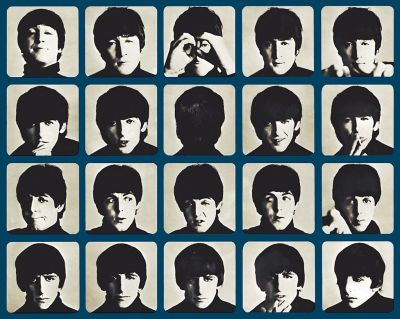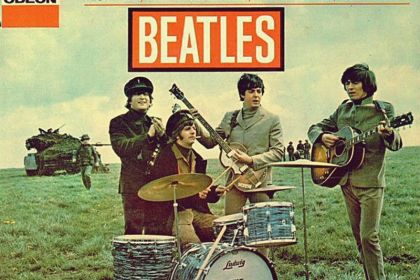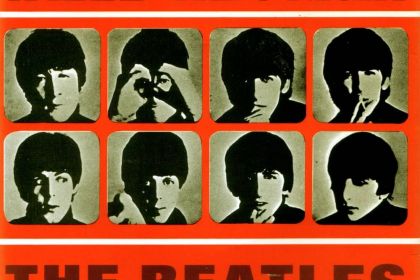Music Theory
9 Beatles songs that combine harmonic major with Ionian mode

A Hard Day's Night LP cover
The polyphonic structure of Western classical music distinguishes it from other musical traditions such as Indian classics where a lone melodic line is accompanied by a developed rhythm section. In contrast, polyphonic music involves the interaction between the horizontal melodic line and vertical chord structures, anticipating the listener's emotional response.
In composition, chord progressions that follow the melody are commonly built with the help of seven-note diatonic scales that also make up the corresponding musical modes traditionally named after the geographical regions of Ancient Greece: Ionian, Dorian, Phrygian, Lydian, Mixolydian, Aeolian, and Locrian.
The vast majority of compositions—whether in classical or popular music—are written in either the Aeolian mode or Ionian mode, the latter better known simply as the major mode. According to music theory, this choice is ideally meant to provide any musical piece with both a polyphonic structure and interaction of diatonic functions, the alternation of which creates tension and resolves it.
In order to somehow diversify the light and cheerful sound of the Ionian mode, its scale degrees are subjected to alteration, with the lowered sixth degree being the most common. The lowering of the sixth degree by a semitone switches the Ionian diatonic scale to the harmonic major scale.
C harmonic major scale:


C harmonic major mode contains the following triads, denoted below according to the rules of harmonic analysis in which major chords are marked with uppercase Roman numerals and minor chords with lowercase Roman numerals:


Among the triads rooted in each degree of the harmonic major scale, there are two diminished chords built on the second and seventh degrees and one augmented chord of the sixth degree. This fact makes the harmonic major mode unsuitable for songwriting, but its subdominant fourth-degree minor chord often appears in Ionian-mode songs to introduce contrasting minor sounds into familiar chord progressions.
The dominance of the Ionian mode in pop music is well demonstrated by the musical output of The Beatles who wrote about fifty Ionian songs for their thirteen studio albums. Out of these fifty songs, nine use the harmonic major scale, in particular the fourth-degree subdominant minor chord.
In classical music, the iv minor subdominant triad is usually found in the final cadences. It is introduced immediately after the IV major subdominant chord, forming an exceptionally euphonious chromatic movement: IV–iv–V or IV–iv–I.
In a similar way, the harmonic major scale appears in The Beatles' I Saw Her Standing There composed in E Ionian. The song's verses and solos are based on the chord progression: E7–A7–E7–B7–E7–A–Am–E–B7–E7 or I7–IV7–I7–V7–I7–IV–iv–I–V7–I7.
Here, the Am minor subdominant chord follows the A major subdominant triad to form a plagal cadence IV–iv–I.
Listen to I Saw Her Standing There by The Beatles:
The same approach to the harmonic major scale is shown in the verses of The Beatles' Lucy In The Sky With Diamonds composed in A Ionian on the following chord chains:
- A–A7–D–Dm or I–I7–IV–Iv
- A–A7–F♯m–Dm or I–I7–vi–Iv
Here, the Dm minor subdominant chord is used both with the D major subdominant triad and with other surrounding chords.
Listen to Lucy In The Sky With Diamonds by The Beatles:
The harmonic analysis of the next five songs reveals a curious formula for applying harmonic major scale exclusively in verses while restricting the choruses to the usual Ionian mode.
The Beatles' What Goes On composed in E Ionian follows these chord progressions:
- E7–Am–E7–Am–B7–E–B7 or I7–iv–I7–iv–V7–I–V7 for the verses
- E7–A7–E7–A7–B7–E or I7–IV7–I7–IV7–V7–I for the choruses.
Note that these sequences are identical except for the fourth-degree subdominant triad that appears as the Am minor chord in verses and as the A major chord in choruses.
Listen to What Goes On by The Beatles:
The Beatles' Nowhere Man written in E Ionian showcases two chord sequences for separate song sections:
- E–B–A–E–F♯m–Am–E or I–V–IV–I–ii–iv–I for the verses and solo
- G♯m–A–G♯m–A–G♯m–F♯m–A–B7 or iii–IV–iii–IV–iii–ii–IV–V7 for the choruses.
In this example, the harmonic minor scale is also represented only in the verses as the Am minor chord. The choruses end with the authentic half cadence ii–IV–V7, performed according to the classical canons to create a sense of expectation for the upcoming tonic triad at the beginning of the next section.
Listen to Nowhere Man by The Beatles:
The Beatles' Any Time At All is based on two progressions composed in D Ionian:
- D–F♯m–Bm–Gm–D–A–D or I–iii–vi–iv–I–V–I for the verses
- D–Bm–D–A–Bm–G–A–D or I–vi–I–V–vi–IV–V–I for the choruses.
The harmonic major appears here only in the verses with the Gm chord. The choruses give a good example of the deceptive cadence V–vi which then classically ends with the powerful authentic cadence IV–V–I.
Listen to Any Time At All by The Beatles:
The Beatles' Across The Universe is based on the following chord sequences written in A♭ Ionian:
- A♭–Fm–Cm–B♭m–E♭ or I–vi–iii–ii–V for the verses
- A♭–Fm–Cm–B♭m–D♭m or I–vi–iii–ii–iv for the verses
- A♭–E♭–D♭–A♭ or I–V–IV–I for the choruses.
The D♭m minor subdominant triad appears at the end of the verse, thereby softening the transition to the chorus.
Listen to Across The Universe by The Beatles:
The Beatles' All I've Got To Do showcases two progressions composed in E Ionian:
- E–C♯m–E–C♯m–F♯m–Am–E or I–vi–I–vi–ii–iv–I for the verses
- E–A–C♯m–A–E–A–E or I–IV–vi–IV–I–IV–I for the choruses.
The section endings feature a typical plagal cadence performed with the minor subdominant triad Am–E in the verses and the major subdominant chord A–E in the choruses.
Listen to All I've Got To Do by The Beatles:
The complex harmonic structure of The Beatles' Ask Me Why written in the key of E major deserves special attention. The choruses clearly follow the Ionian mode as seen in these progressions:
- A–B7–E–A–B7–E–B7 or IV–V7–I–IV–V7–I–V7
- E–A–B–A–E–G♯m–A–E or I–IV–V–IV–I–iii–IV–I
In the progressions accompanying the verses, the harmonic major scale is used with the Am minor subdominant triad:
- E–A–B–A–E or I–IV–V–IV–I
- G♯→C♯m–Am–F♯→B7 or V/vi→vi–iv–V/V→V7
- G♯→C♯m–A–E or V/vi→vi–IV–I
Marked in red, G♯ and F♯ chords belong neither to the Ionian nor harmonic major mode and act as secondary chords that shift the tonal center, introducing a new temporary tonic triad. This technique is known as tonicization and is quite common in classical music. In this case, the G♯ chord is the secondary dominant for the C♯m submediant triad rooted in the sixth scale degree, while the F♯ chord acts as the secondary dominant for the B7 fifth-degree seventh chord.
Listen to Ask Me Why by The Beatles:
Of course, the harmonic major scale is not limited to Ionian songs, as exemplified by The Beatles' I Want To Tell You composed with the following progressions in A Lydian mode:
- A–B–E7–A or I–II–V7–I
- Bm–Dm–A–B7–Bm–Dm–A or ii–iv–I–II7–ii–iv–I
Here, the Dm minor subdominant chord replaces a diminished chord rooted in the fourth scale degree of the Lydian mode, and the chord alternation Bm–Dm switches the Lydian mode to the harmonic major.
Listen to I Want To Tell You by The Beatles:
As mentioned before, the harmonic major is hardly applicable on its own as its lineup contains two diminished chords and one augmented chord, as well as one interval of an augmented second between the seventh and sixth scale degrees. The theory prevents the applicability of augmented intervals in the linear voice leading due to the fact that such melodies are not viewed as extremely musical.
Discover more songs composed in Ionian major mode and check out their harmonic analysis in the following articles:
- 6 songs to unpack Ionian mode and the major scale
- Sugaree: Jerry Garcia's song referencing his lyricist's criminal past
- D'yer Mak'er: meaning of Led Zeppelin's most controversial song
- Seven Seas of Rhye: song of imaginary land brought to life by Ionian and Mixolydian modes
- Tumbling Dice: hundred reels of tape for a messy Rolling Stones mix
- Marie Laveau: ballad of the legendary Voodoo Queen
- Statesboro Blues: no one can sing the blues like Blind Willie McTell
- Terraplane Blues: first song to compare car problems with intimate relationship
- Hushabye: folk roots of famous rock and roll lullaby
- Coal Miner's Daughter was forced to remove a third of the lyrics from her autobiographical song
- I Wanna Be Sedated: pure classical harmony cementing the Ramones' hit in punk rock history
- Yakety Yak: teenager's answer to household chores in a hit song



